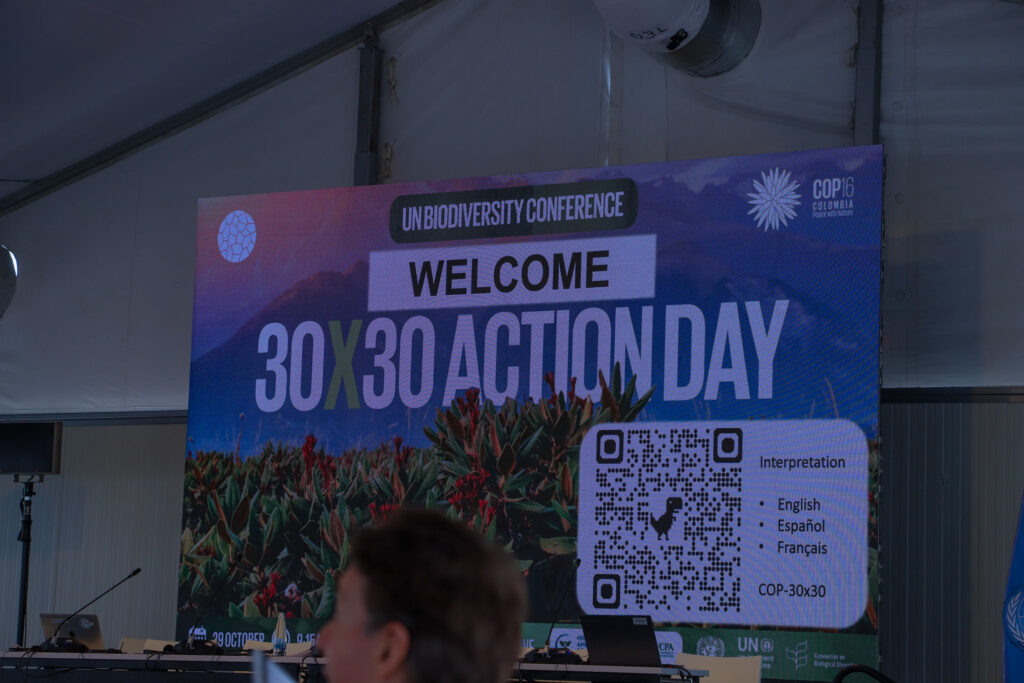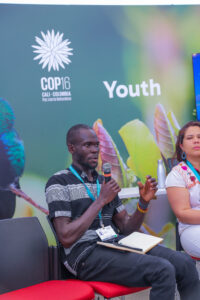CBD COP16: A turning point for Nature and People

CBD COP16- the World’s opportunity to protect and conserve Biodiversity through the decade
The 16th Conference of the parties to the Convention on Biological Diversity (UN CBD COP16) between 21st October- 1st November in Cali Colombia came through a turning point two years after adoption of the Kunming-Montreal Global Biodiversity Framework- setting an agenda for Conservation of Biodiversity through the decade and beyond. Convening are Governments, Indigenous People and Local Community groups, youth, Academic and research institutions, private sector actors, Non-Governmental Organizations to steer a common goal and agenda for Conservation of Biological diversity through bilateral engagements, negotiation sessions, contact group meetings and side events around the 23 targets of the Biodiversity Framework.

While only 44 out of 196 countries submitted their updated NBSAPs, lots of deliberations and engagements were probably left hanging and unattended by the end of the Conference. Two major outcomes and successes that arose included;
- An agreement on equitable sharing of genetic information- Digital Sequencing Information (DSI) mostly by large pharmaceuticals to share their revenues with communities where these resources were first discovered
- Creation of a permanent body to represent Indigenous people and local communities within the framework
30 by 30 and the need for more;
Certainly, lots of progress was registered through exchange sessions; panels, plenaries and side events- strengthening synergies and collaborations among several stakeholders during the Conference. Significant steps were also seen through deliberations on Target 3 of the Biodiversity Framework. Protecting at least 30% of the land and seas by 2030 alone is certainly not enough to counteract and cope with the rates of biodiversity loss.
Noted as one of the most contentious targets since adoption of the Biodiversity Framework in Montreal, target 3 might have seen more progress towards achieving equity in its guiding frameworks- pending realignment of some more indicators. Deliberations on the 30 by 30 target which spells out to protect at least 30% of the land and seas by 2030 could be one of the targets that changes the face of PCA conservation efforts around the World. The 30 by 30 action day, conevend by the High Ambition Coalition and the IUCN World Commission on Protected Areas set stage for discussions and engagements on advancing the need to protect and ensure the effectiveness of Area-based Conservation. A series of publications and reports were also launched in line with Target 3 of the Biodiversity Framework, including the Protected Planet Report, highlighting the state of protected and Conserved Areas around the World.
Panels and presentations;
Speaking at two panels, Aiita shared experiences from his work with young and early career professionals and advocated for an inclusive approach to Nature-based Solutions policy at the sidelines of the Congress, hinging onto the first ever Global Youth position on Nature-based Solutions. His deliberation at a panel on linking the NBSAPs, Youth and Nature-based Solutions, took reference to the first ever Global Youth position on Nature-based Solutions co-developed by the Youth4Nature, Global Youth Biodiversity Network, and YOUNGO elaborating on a rights based approach to Nature-based Solutions policy and practice. The statement provides key messages and key guiding tools for policy makers and practitioners to equitably implement NbS policy. The panel also featured speakers from the Nature-based Solutions Initiative of the University of Oxford.
Enhancing (co)leadership for youth and young professionals goes a long way in addressing the systemic barriers to intergenerational knowledge transfer and exchange- while empowering and creating spaces for innovation. Speaking and presenting at his second panel, organized by Selvitas, Aiita elaborated, from experiences of his work supporting early career professionals as a way to promote stewardship and a community of practice for Conservation. We explored pathways for amplifying youth involvement in conservation initiatives, showcasing how young leaders across the globe are already pioneering solutions for biodiversity and climate resilience. These are continuous dialogues that underscore the transformative potential of equipping young people with the tools to drive sustainable change in their communities. I also had the opportunity to attend the Global Landscapes Forum parallel event at the sidelines of COP16 on Sustainable financing mechanisms for biodiversity.
The CBD COP16 can be thought of as a step building on from the adoption of the Kunming-Montreal Global Biodiversity Framework, towards the goal of living in harmony with nature.
More on the notable achievements from the Conference can be found here